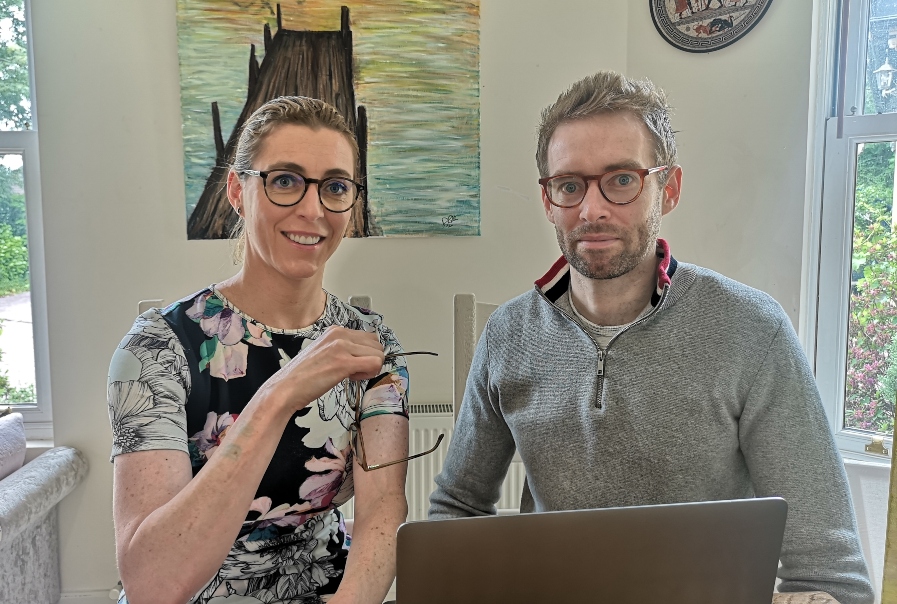As the future becomes more and more data oriented, analytics will trump intuition almost every time.
In the words of the late, great statistician W. Edwards Derning, “In God we trust. All others must bring data.” The time has come for companies to embed this ideology from the ground up; eschewing going with our gut in favour of data-driven decision making. By analysing consumer trends and analytics, companies can make the most informed decisions on where to invest, which new products or services to launch, and – importantly – what’s not working.
Data is integrated throughout our business model here at Ding, from individual campaign performance metrics right up to whole-business strategic decisions. Data gives us much deeper insights into customer behaviour and patterns, allowing us to make decisions that best serve our market. By documenting the customer journey, we gain an insight into customer behaviour and the ability to better anticipate what our customers will want next.
“Data gives us much deeper insights into customer behaviour and patterns, allowing us to make decisions that best serve our market”
At organisations where growth is fast and ambitions are unlimited, data is used to make the best strategic business decisions about where to go next. There is so much potential surrounding businesses and their prospective growth strategies. It is impossible to pursue every single opportunity identified but data enables a sensible prioritised plan of execution. Of course, while data informs strategy, it is important to be ready to pivot if, as data continues to be obtained, the outcomes aren’t what were desired.
Starting at the top
Support from senior management is fundamental to embedding a data-driven culture. As Harvard Business Review says, “very few companies intentionally work on their culture. In fact, many companies just let culture happen.” The leadership team must empower the data team and support it vocally; it is also imperative that leadership takes an active role in developing employee’s skills. The data team are the guardians of the company’s data, but relevant analytics are shared with teams to assist them in their strategic decision making. The goal is to get to a place where everyone is an analyst, understanding not only their own area but how it plays into the bigger picture. This involves company-wide training to ensure that everyone is more data aware.
Data plays a central role in examining how something like the current pandemic impacts the organisation. From a Ding perspective, demand shifted significantly from early March to late March, it was truly a game of two halves, and a dramatic increase in demand was notable in both internal and external data. A large majority of our online users are now sending cross-border top-ups more frequently than they were before the pandemic. There was a huge spike in traffic in Spain and Italy which highlighted to us the effect of the restrictions as they were being enforced. We saw growth rates within online channels of both current and new users and those switching from retail.
“At organisations where growth is fast and ambitions are unlimited, data is used to make the best strategic business decisions about where to go next”
People had to change the way they were keeping their phones topped up and were being pushed to digital channels as their local retail stores were forced shut. Being presented with this data forced us to think about what we were going to do about it. We were able to respond to the data in real time by redirecting social media campaigns to the markets where a clear need was identified. This agile thinking has led to double digit growth year on year for Ding.
The big five
There are five stages to developing a data-driven culture and depending on where an organisation is on their journey, there are a number of steps companies can take to move towards being data-driven:
- Recognise the opportunity within data: It’s important to embed this at an organisational and especially at a cultural level. Changing company culture takes time and patience and it can be a bumpy road. It requires commitment and may not happen overnight
- Invest in collecting data: It is vital to capture the data, store it and ensure that the data is of high quality. If the data isn’t high quality, analysing it is a waste of time
- Invest in tools: There are powerful free tools out there to get started but it’s also worth exploring investing in what is best for your company
- Find ways to visualise the data: People think in pictures; it’s much easier to comprehend scale and proportions when they’re visualised rather than on an Excel sheet
- Be agile: Use the data you have! Look at what your data is telling you and be willing to change course. Use data to drive decision making within the company
In regulatory terms, GDPR practices give customers ownership over their data and peace of mind. As businesses continue to embrace this culture of data, it’s important that customers feel protected. On a surface level, we’re able to see where top-ups are being bought – and sent – and that empowers our ability to continually hone and improve our offering.
As the future becomes more and more data oriented, analytics will trump intuition almost every time. It’s crucial that all employees have a basic understanding of data-driven decisions, and that organisations listen to what data is telling them and make strategic decisions accordingly.
By Dean Savery
Dean joined Ding in 2012 and was appointed chief analytics officer in 2018. Prior to this he was head of operations and analytics. Prior to joining Ding, Dean worked at the Dublin Airport Authority (DAA) where he was a treasury analyst and an aviation analyst. He has a Bachelors in Science and Applied Mathematics, from National University of Ireland, Galway.
Published: 26 June, 2020







